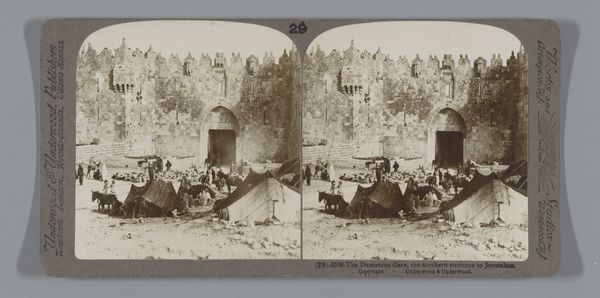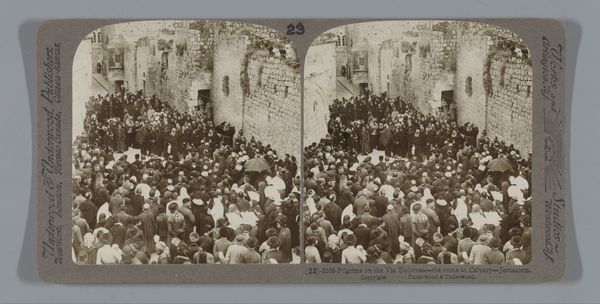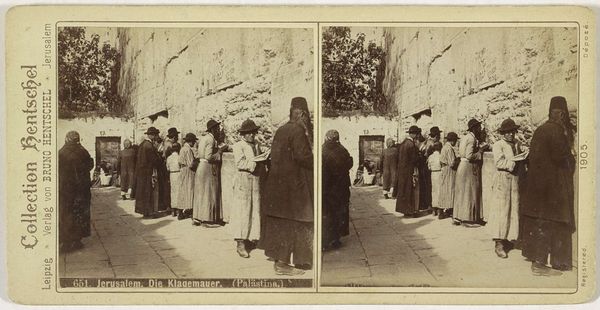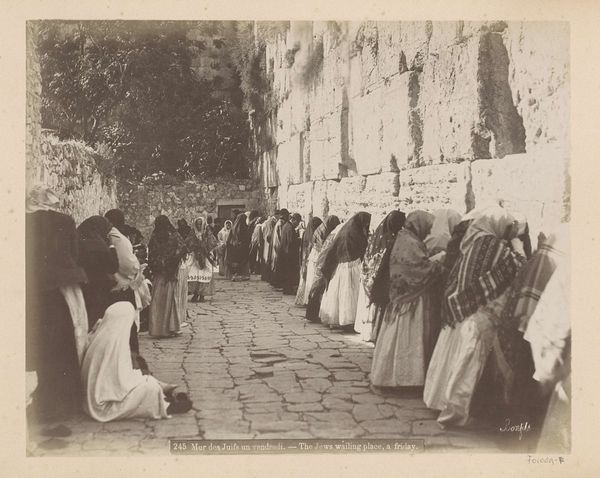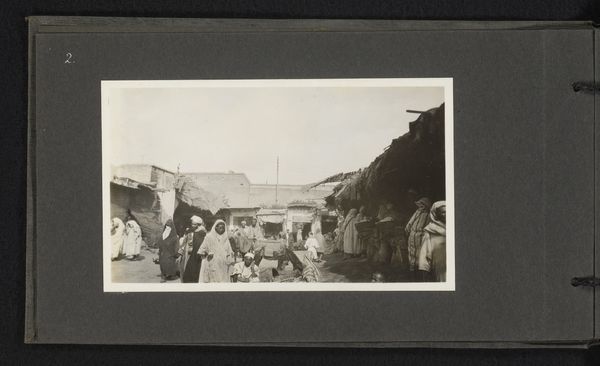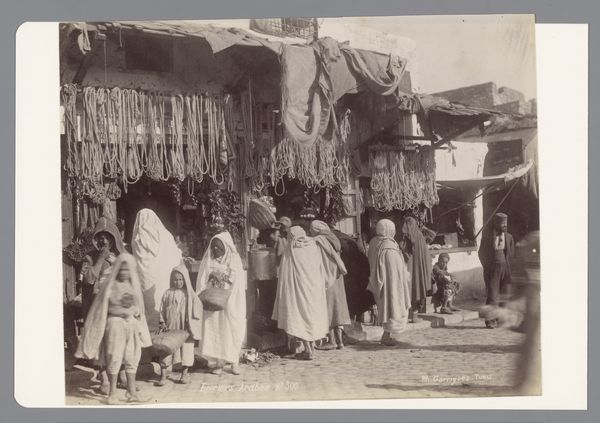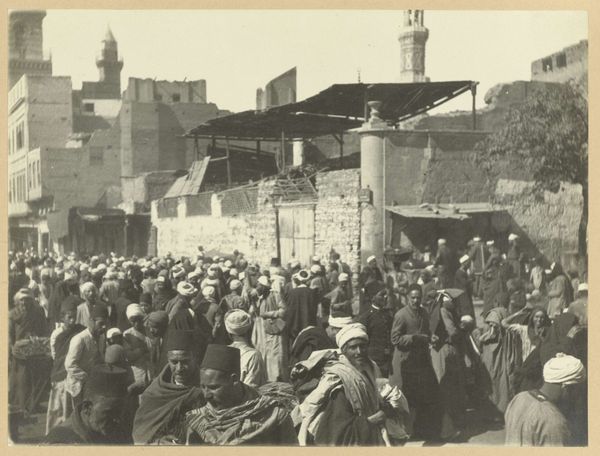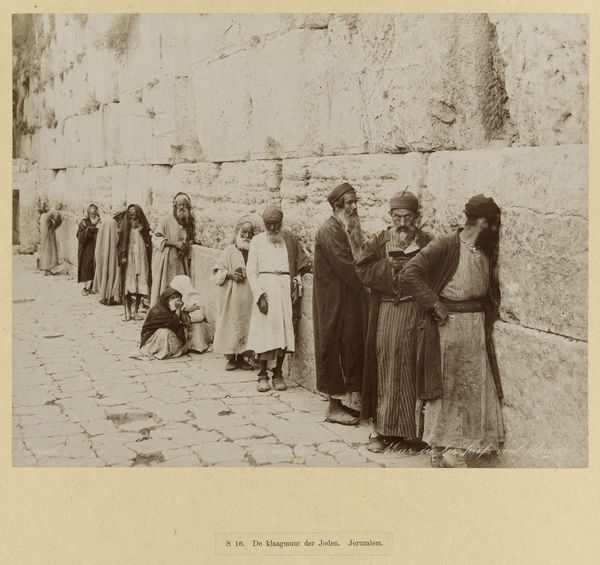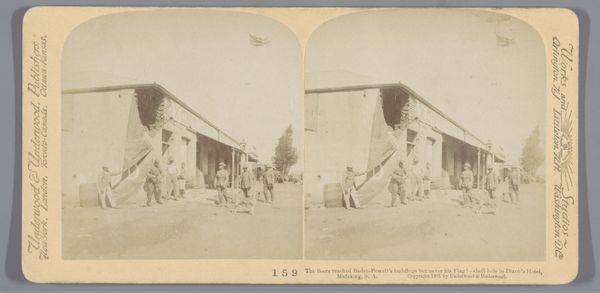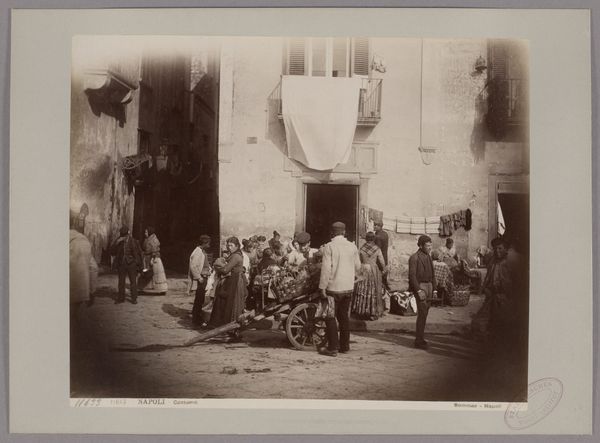
photography, gelatin-silver-print
#
landscape
#
street-photography
#
photography
#
orientalism
#
gelatin-silver-print
#
genre-painting
Dimensions: height 88 mm, width 177 mm
Copyright: Rijks Museum: Open Domain
Curator: This gelatin-silver print, "Mensen bij de Klaagmuur, Jeruzalem," offers a fascinating glimpse into life around 1900-1905. What strikes you initially? Editor: The sheer number of people pressing against the wall is arresting. The monochrome tones contribute to a sense of solemnity, almost grief. What a physical representation of collective memory and longing. Curator: Indeed. Consider the medium—photography itself. Its mechanical reproduction made such scenes accessible to a wider Western audience, influencing perceptions of the "Orient." The composition itself, with the massive wall looming over the figures, suggests a power dynamic, don't you think? Editor: Absolutely. You can see how labor manifests not just in the construction of the wall but in the performance of faith—the positioning of the body, the tactile connection to the stone. It reminds us that spirituality itself has material conditions. Curator: And these aren't just generic figures; they represent a cross-section of identities—gender, class, possibly even differing interpretations of faith. How did they experience the socio-political climate of their time? Were they active agents of their realities? Were they coerced into this public performativity? Editor: Right, this act of photographing converts them into image, artifact. I also consider the work involved in creating this image—from capturing it with a camera and light, developing that print, and how circulation changes this very intimate, devotional exchange. Curator: A powerful point. And the orientalist style adopted speaks to the visual culture of that period, where the "other" was often exoticized and romanticized—a lens through which identity was then constructed for a global public. This reinforces the very Western notions of what holiness means for these devotees. Editor: It forces a discussion on whose view is promoted—even at the expense of the individual worshippers here at the Western Wall, their expressions turned away, buried from public gaze. We are asked not to see their individualized material experience, but only accept their devotion. Curator: Thinking critically about the subjects depicted here also shows the long legacy of struggle against erasure by Orientalist works like this one. Thank you, this has made me reconsider the image from so many more perspectives. Editor: A valuable exercise; shifting focus towards the materiality and socio-political implication broadens the artwork beyond aesthetic concerns. I see it now as a call for agency and remembrance.
Comments
No comments
Be the first to comment and join the conversation on the ultimate creative platform.
